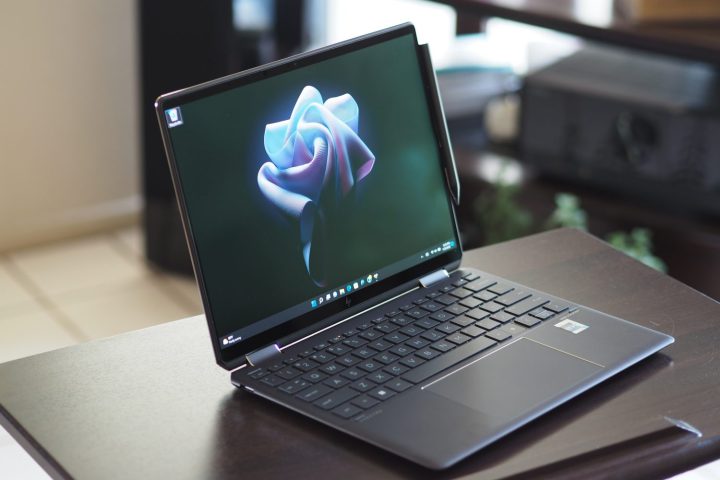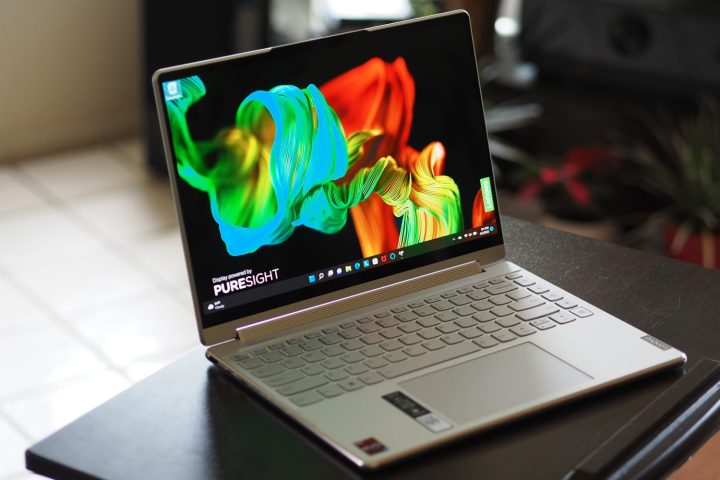The convertible 2-in-1 laptop market has two obvious leaders. There’s the HP Spectre x360 13.5 and the Lenovo Yoga 9i Gen 7, both of which have shown up on our list of best laptops overall because of their incredible build quality, outstanding good looks, and solid performance.
Even though they’re similar machines, they’re not identical. It’s hard to pick a winner between the two, and in the end, you can’t go wrong with either.
Specs
| HP Envy x360 13.5 | Lenovo Yoga 9i Gen 7 | |
| Dimensions | 11.73 inches by 8.68 inches by 0.67 inches | 12.52 inches by 9.06 inches by 0.6 inches |
| Weight | 3.01 pounds | 3.09 pounds |
| Processor | Intel Core i5-1235U Intel Core i7-1255U |
Intel Core i5-1240P Intel Core i7-1260P Intel Core i7-1280P |
| Graphics | Intel Iris Xe | Intel Iris Xe |
| RAM | 8GB LPDDR4 16GB LPDDR4 32GB LPDDR4 |
8GB LPDDR5 16GB LPDDR5 |
| Display | 13.5-inch 3:2 IPS WXUGA+ (1920 x 1280) 13.5-inch 3:2 IPS WXUGA+ (1920 x 1280) privacy screen 13.5-inch 3:2 OLED 3K2K (3000 x 2000) |
14-inch 16:10 IPS WUXGA (1920 x 1200) 14-inch 16:10 OLED WQHD+ (2880 x 1800) 14-inch 16:10 OLED WQUXGA (3840 x 2400) |
| Storage | 512GB PCIe 4.0 solid-state drive (SSD) 1TB PCIe 4.0 SSD 2TB PCIe 4.0 SSD |
256GB PCI 4.0 SSD 512GB PCIe 4.0 SSD 1TB PCIe 4.0 SSD |
| Touch | Yes | Yes |
| Ports | 2 x USB-C 4.0 with Thunderbolt 4 1 x USB-A 3.2 Gen 2 1 x 3.5mm audio jack 1 x microSD card reader |
1 x USB-C 3.2 Gen 2 2 x USB-C 4.0 with Thunderbolt 4 1 x USB-A 3.2 Gen 2 1 x 3.5mm audio jack |
| Wireless | Wi-Fi 6E and Bluetooth 5.2 | Wi-Fi 6E and Bluetooth 5.2 |
| Webcam | 5MP with infrared camera for facial recognition | 1080p with infrared camera for facial recognition |
| Operating system | Windows 11 | Windows 11 |
| Battery | 66 watt-hour | 75 watt-hour |
| Price | $1,000+ | $1,160 |
| Rating | 4.5 out of 5 stars | 4 out of 5 stars |
Price and configurations
The least-expensive HP Spectre x360 13.5 that you can buy costs $1,000, with a 15-watt 10-core/12-thread Intel Core i5-1235U CPU, 8BG of LPDDR4 RAM, a 512GB PCIe Gen4 SSD, and a 13.5-inch 3:2 WXUGA+ (1920 x 1280) IPS display. At the high end, you’ll spend $1,770 for a Core i7-1255U (faster clock speed than the Core i5), 32GB of LPDDR4 RAM, a 2TB PCIe Gen4 SSD, and a 13.5-inch 3:2 3K2K (3,000 x 2,000) OLED display.
The Yoga 9i Gen 7 starts at $1,160 for a Core 28-watt 12-core/16-thread Core i7-1260P, 8GB of LPDDR5 RAM, a 256GB PCIe Gen4 SSD, and a 14-inch 16:10 WUXGA (1920 x 1200) IPS display. The most you’ll spend is $1,850 for the Core i7, 16GB of LPDDR5 RAM, a 1TB PCIe Gen4 SSD, and a 14-inch 16:10 WQUXGA (3840 x 2400) OLED display.
That makes the Lenovo slightly more expensive than the HP, but both are solidly in premium 2-in-1 territory.
Design
- 2. Lenovo Yoga 9i 14 Gen 7
Both machines underwent serious redesigns in their latest generations. The Spectre x360 13.5 rounded off the sharp edges and flat sides of the Spectre x360 14 while retaining its overall gem-cut design and elegant, good looks. The Lenovo Yoga 9i Gen 7 underwent an even more significant aesthetic upgrade, morphing from a rather pedestrian 2-in-1 with a minimalist design to one that rounded off the edges and created a stunningly cohesive new look. Both laptops are lookers, and which is more attractive comes down to personal taste.
In terms of their build quality, it’s another tie. Each is constructed of CNC machined aluminum and is solid as a rock with zero bending, flexing, or twisting. These are two of the best-built 2-in-1s you can buy.
The Spectre x360 13.5 has an excellent keyboard, with large and comfortable keycaps and plenty of key spacing. The switches provide plenty of travel with snappy response and a confident bottoming action. It’s one of the best keyboards on a Windows laptop. The Yoga 9i Gen 7’s keyboard, on the other hand, is quite shallow with a soft bottoming action. That offsets the large, sculpted keycaps and copious key spacing, making for a lesser experience.
Each laptop’s touchpad is large and comfortable, with precise Windows 11 multitouch gestures and quiet, confident clicks. And, of course, both 2-in-1s sport touch displays with active pen support. Both include a pen in the box.
Connectivity slightly favors the Spectre x360 13.5, primarily because it features a microSD card reader. Both support Thunderbolt 4, and both utilize the most up-to-date Wi-Fi 6E and Bluetooth 5.2.
Privacy, security, and webcam
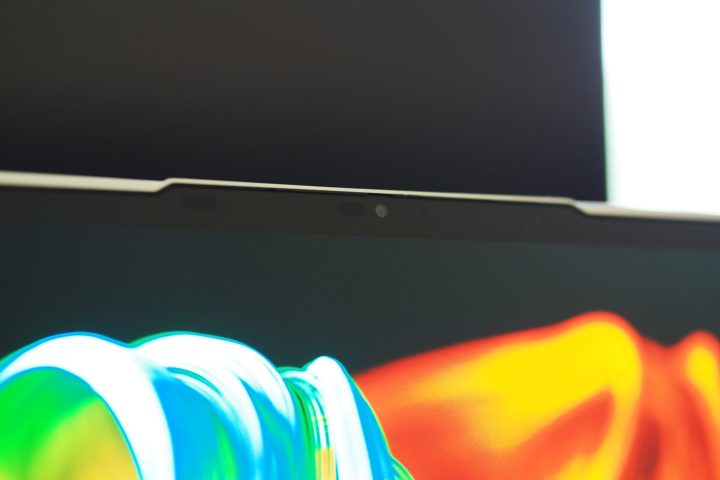
The Spectre x360 13.5 has a 5MP webcam with the usual low-light and brightness tools, along with a feature that keeps the user’s face centered in the video frame. The Yoga 9i Gen 7 has a 1080p webcam with similar capabilities. Both laptops feature infrared cameras for Windows 11 Hello passwordless login support, along with fingerprint readers. You can turn off the webcam on both 2-in-1s for privacy.
Lenovo packed in several Smart Assist utilities that further enhance privacy and security. Zero Touch Lock puts the Yoga 9i Gen 7 to sleep when the user steps away, and Zero Touch Login wakes it up and logs in when the user returns. The features worked well and are a genuine convenience.
Both laptops provide excellent videoconferencing quality, and the Yoga 9i Gen 7 offers more privacy and security features.
Performance
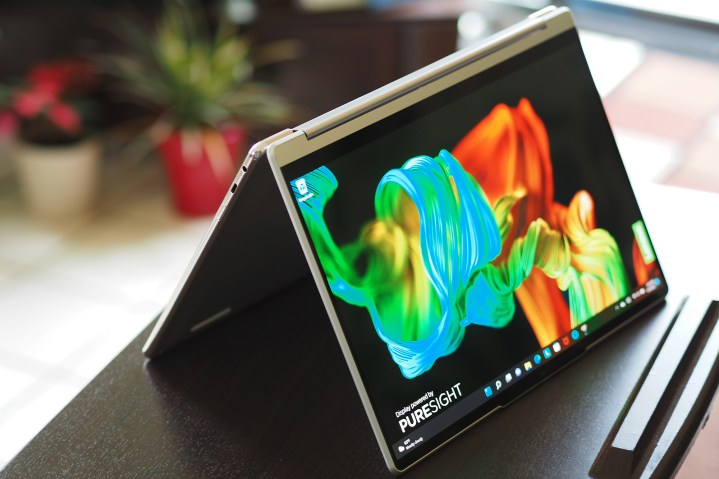
One area of divergence is in the choice of CPU. HP went with the 15-watt 10-core/12-thread Intel Core i5-1235U and faster-clocked Core i7-1255U. That CPU promises better battery life while giving up some performance. Lenovo went with the 28-watt 12-core/16-thread Core i5-1240P and faster Core i7-1260P, along with the 14-core/20-thread Core i7-1280P.
According to our benchmarks, the Yoga 9i Gen 7 was the faster laptop by a fair margin. The biggest difference was in Geekbench 5, but the Lenovo was also faster in our Handbrake test that encodes a 420MB video as H.265 and in Cinebench R23. Both 2-in-1s performed well in the PCMark 10 Complete benchmark, although again, the Yoga 9i was faster.
Technically speaking, this is a win for the Yoga 9i Gen 7. In real-world use, the difference likely wouldn’t be obvious to the demanding productivity users toward which both 2-in-1s are aimed. Neither are designed to handle creative tasks, and the Lenovo wasn’t that much faster in the two benchmarks most indicative of that kind of performance. This was particularly true when both laptops were running in their respective performance modes.
| HP Spectre x360 13.5 (Core i7-1255U) |
Lenovo Yoga 9i 14 Gen 7 (Core i7-1260P) |
|
| Geekbench 5 (single / multi) |
Bal: 1,566 / 7,314 Perf: 1,593 / 7,921 |
Bal: 1,717 / 9,231 Perf: 1,712 / 10,241 |
| Handbrake (seconds) |
Bal: 169 Perf: 120 |
Bal: 130 Perf: 101 |
| Cinebench R23 (single / multi) |
Bal: 1,623 / 5,823 Perf: 1,691 / 7,832 |
Bal: 1,626 / 7,210 Perf: 1,723 / 8,979 |
| PCMark 10 Complete | 5,203 | 5,760 |
| 3DMark Time Spy | Bal: 1,582 Perf: 1,815 |
Bal: 1,658 Perf: 1,979 |
Display and audio
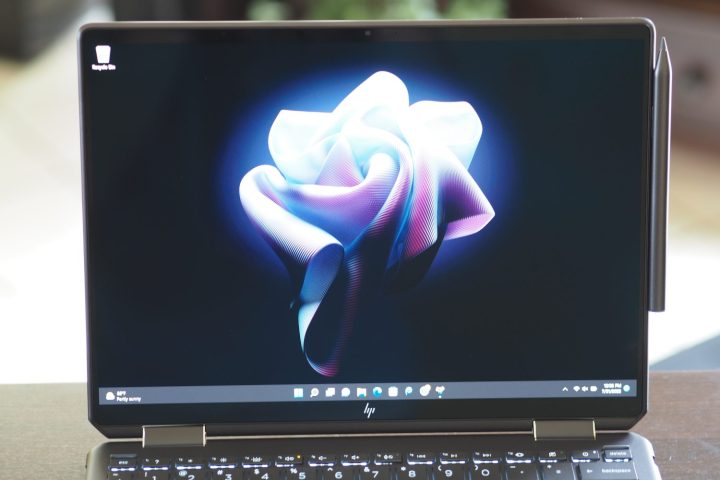
We reviewed the Spectre x360 13.5 with its 13.-5-inch 3:2 3K2K OLED display and the Yoga 9i Gen 7 with its 14-inch 16:10 WQHD+ panel. In terms of their overall quality, both were excellent, with the HP having slightly wider and more accurate colors and the Lenovo being a bit brighter. HP also offers a WQXGA+ (1920 x 1280) IPS display and a privacy screen option at the same resolution, while Lenovo offers a WQXGA (1920 x 1200) IPS display and a UHD+ (3840 x 2400) OLED panel.
The meaningful difference was in the Spectre x360 13.5’s taller 3:2 aspect ratio and higher resolution. While 16:10 is a nice jump over old-school 16:9 displays, 3:2 is preferable, showing off even more vertical content and working best in tablet mode by closely matching a physical sheet of paper. Both 2-in-1s have excellent displays, but the Spectre x360 13.5 wins out.
| HP Spectre x360 13.5 (OLED) |
Lenovo Yoga 9i 14 Gen 7 (OLED) |
|
| Brightness (nits) |
380 | 406 |
| AdobeRGB gamut | 97% | 95% |
| sRGB gamut | 100% | 100% |
| Accuracy (DeltaE, lower is better) |
0.61 | 0.87 |
| Contrast ratio | 28,230:1 | 28,380:1 |
The Yoga 9i Gen 7 incorporates Lenovo’s Soundbar into its hinge, which houses two tweeters and two woofers to produce tons of volume and some genuine bass. The setup did produce some distortion, however. The Spectre x360 13.5 uses a more conventional system, with four downward-firing speakers that also produced enough volume but was lacking in bass.
Portability
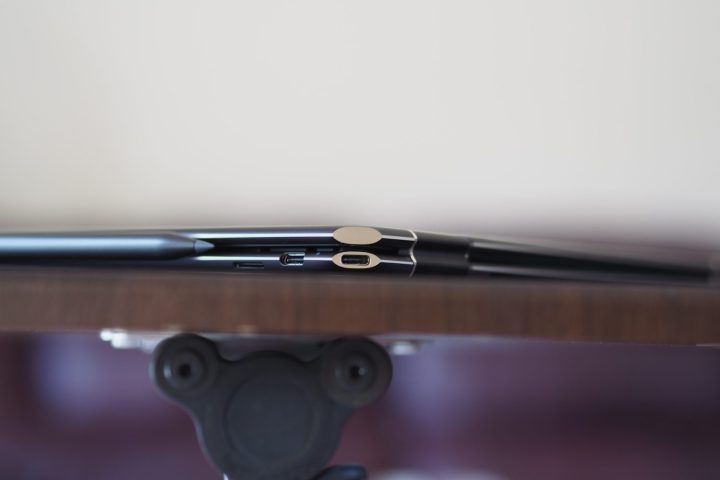
Thanks to its smaller display, the Spectre x360 13.5 is slightly less wide and deep than the Yoga 9i Gen 7. The latter is thinner, however, at 0.6 inches version 0.67 inches, while being slightly heavier at 3.09 pounds versus 3.01 pounds. Each 2-in-1 is easy enough to slide into a backpack and carry around.
Although it has less battery capacity, the Spectre x360 13.5 still managed to last about an hour longer in both our web browsing and video battery tests. The HP lasted almost two and a half hours longer in the PCMark Applications battery test, the best indication of productivity longevity.
Both 2-in-1s will last for a full day’s work, but the Spectre x360 13.5 will hold out for longer. The difference is roughly equal to the performance delta, demonstrating that HP did a respectable job of balancing the efficiency and performance of its chosen CPU.
| HP Spectre x360 13.5 (Core i7-1255U) |
Lenovo Yoga 9i 14 Gen 7 (Core i7-1260P) |
|
| Web browsing | 9 hours, 58 minutes | 9 hours, 10 minutes |
| Video | 13 hours, 59 minutes | 12 hours, 45 minutes |
| PCMark 10 Applications | 10 hours, 52 minutes | 8 hours, 32 minutes |
Two excellent 2-in-1s, it’s hard to pick a winner
There’s no doubt that both the Spectre x360 13.5 and the Yoga 9i Gen 7 are outstanding laptops and the best convertible 2-in-1s available. Each has its advantages, such as the Yoga’s higher performance and the Spectre’s longer battery life. Both are extremely well-built, attractive, and offer spectacular displays.
In the end, it comes down to the little things, like the Spectre x360 13.5’s much better keyboard and higher webcam resolution. We’ll give the HP the win, but it’s by a very thin margin.
